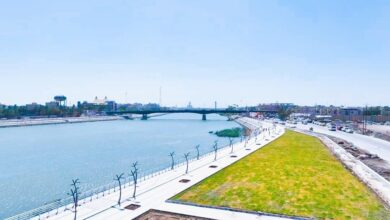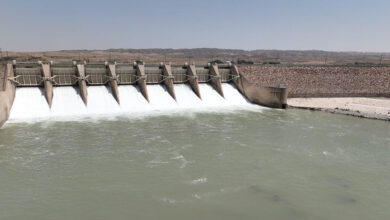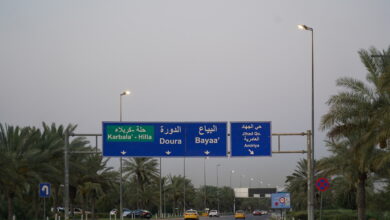Over 21 years on from his removal, the palace of Sadam Hussein remains standing despite attempts to convert the site into an archaeological museum.
The palace built by the regime on an artificial hill in the ancient city of Babylon is an architectural masterpiece that testifies to the end of an era in Iraq’s history. The palace is distinguished by its geographical location, which overlooks the Euphrates River. It was built by Saddam during the years of the siege, and is distinguished by the economic situation that was imposed on Iraq after the second Gulf War. The ceilings and walls of the palace are decorated with inscriptions representing palm trees, stars, geometric shapes and drawings representing the Hanging Gardens, the Obelisk of Hammurabi, and the Ishtar Gate.
Specialists loyal to Saddam’s regime chose this place to be far from the eyes of Iraqi citizens, and it was forbidden to approach it until 2003. The palace was built on the ruins of the ancient city of Babylon, and caused severe damage to the ancient city of Akhnar. After the entry of the American forces in 2003, the American forces took the palace as their headquarters until their exit in 2011, after which it and the surrounding garden were transformed. The palace is located more than two hundred meters from the ancient city of Babylon. During his rule, Saddam Hussein built dozens of palaces and luxurious complexes, his initials were engraved on their walls, but today most of them have become rubble or military bases, and those that have overcome the test of time have been left to neglect.
The number of these palaces and presidential complexes exceeds 100, including huge buildings in seven provinces, but the majority of them are in Baghdad and his hometown of Tikrit, located 180 km north of the capital. The construction of these palaces began at the end of the eighties and was completed in the mid-nineties, at the height of the economic blockade imposed on Iraq. On the huge concrete walls, the former Iraqi president carved his initials, in addition to the names of his battles against Iran and others. However, after the fall of his regime with the American presence in 2003, most of them were looted before foreign forces turned them into military headquarters.
As part of the attempt to restore and exploit the palace, the Iraqi Ministry of Culture announced procedures for converting the presidential palace in Babil Governorate into an archaeological museum. The professor of the Department of Tourism at the University of Babylon d. Haider Naim said that a delegation met the Ministry of Culture, Tourism and Antiquities with the governor of Babylon, and the meeting discussed the transformation of the presidential palace into a museum befitting the province and its name according to international standards, within the projects of Babylon, the capital of civilized Iraq from the allocations of the local government.
While Abd al-Sattar Naji, who is the current director of the site, said that it requires governmental seriousness to exploit the site and rebuild it, and he stated that the conferees stressed the necessity of “referring the palace to a solid international company specialized in the field, after the launch of practical procedures in cooperation with the Babylon Governorate Diwan and the relevant ministries and bodies.” Art within the city of Hilla simulates the historical dimension of the governorate.
- Published: 7th February, 2023
- City: Babylon
- Country: Iraq




